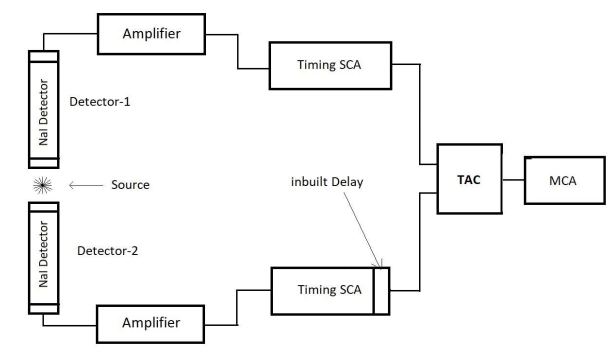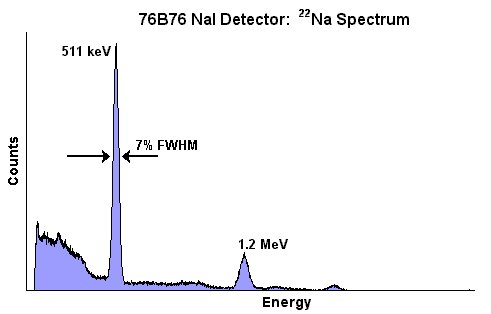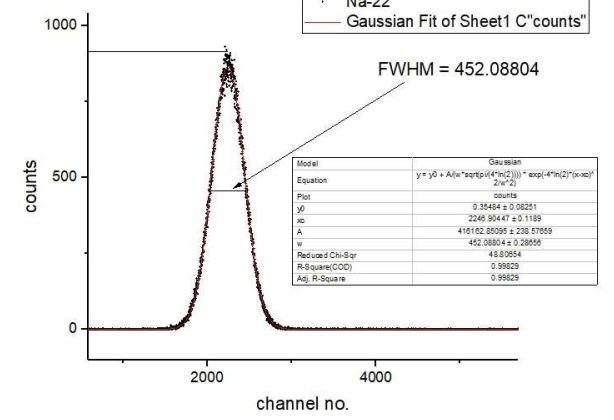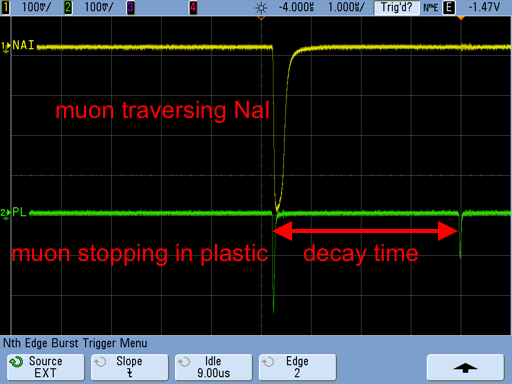I am quite new in nuclear physics instrumentation. So my question may seem silly.
We are performing timing experiment in our lab to obtain better time resolution of NaI(Tl) detectors in conjunction with its relevant electronics. Modules are-
Na22 source; NaI(Tl) followed by preamp (gain set at X6, means 6 times gain); timing SCA (timing single channel analyser); TAC (time to amplitude converter); MCA (multi-channel analyser).
Now the reason we avoid using Amplifier is that, it will blur timing signal. So basically we are feeding preamp siganl of NaI(Tl) directly to timing SCA. Problem is then, it is very hard to set windows (LLD and ULD) of timing SCA so that both can trigger only when $511~\rm keV$ pass by.
Any ideas?
EDIT::
We have 22Na source which will emit two prompt (no time gap) 511 keV gamma rays deu to electron positron annihilation. Although in figure amplifier is shown but now we are trying the same experiment without Amplifier. With amplifier we got timing resolution of 13 ns approx. Here timing SCAs will act in window mode and their window will be fixed at appropriate position so that both only discriminate 511 keV photons (there are other gammas also see spectrum below). And one SCA will produce a start logical pulse and other SCA will produce a stop pulse for TAC. The duration between start and stop pulse will be used as discharge time of a capacitor placed inside TAC. Finally that charge will be used as signal to MCA. MCA signal graph will look like this (see below). From that we can get time resolution using calibration slope.
Now without ampilfier signal will be of low voltage. Hence there will be two ways. One- use preamp of NaI(Tl) as amplifier (changing jumper setting). Two- increase PMT volatage. I have tried both of them. But with no success. Everytime I am getting signals in MCA all over the place which means SCAs are not catching 511s.
Any suggesstion?
Thanks in advance.




